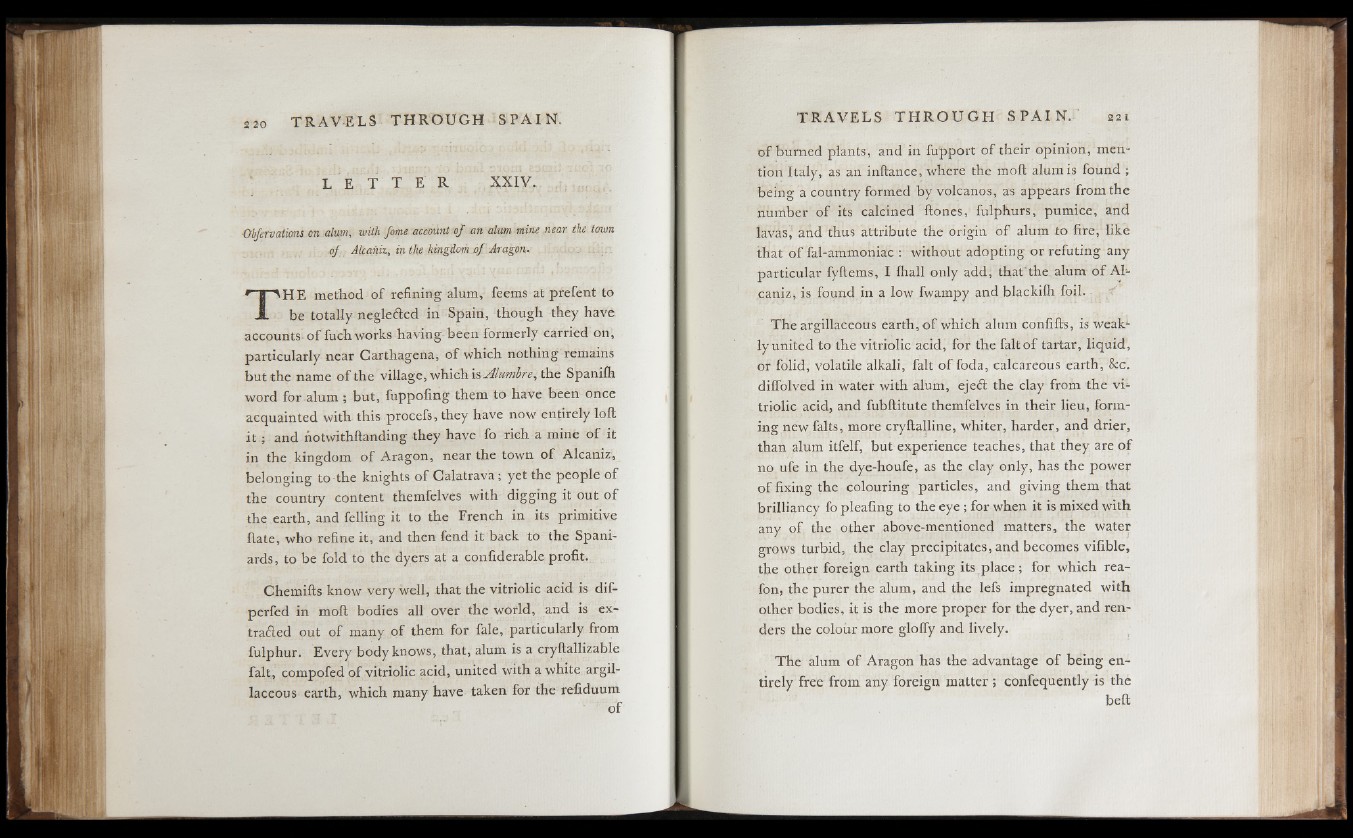
L E T T E' R XXIV...
Obfervations on alum, with Jotne account o f an alum mine near the. town
o f Alcaniz, in the kingdom o f Aragon,
THE method of refining alum,- feems at prefent to
be totally negleifted in Spain, though they have
accounts, o f fuchworks having been formerly carried on,
particularly near Carthagena, of which nothing remains
but the name of the village, which is¿Uuwibre^ the Spaniih
word for alum ; but, fuppofing them to have been once
acquainted with this procefs, they have now entirely loft
it.; , and notwithftanding they have fo rich a mine o f it
in the kingdom o f Aragon, near the town o f Alcaniz,
belonging to-the knights o f Calatrava; yet the people of
the country content themfelves with digging it out o f
the earth, and felling it to the French in its primitive
ftate, who refine it, and then fend it back to the Spaniards,
to be fold to the dyers at a confiderable profit.
Chemifts know very well, that the vitriolic acid is dif-
perfed in moft bodies all over the world, and is ex-
trailed out of many of them for fale, particularly from
fulphur. Every body knows, that, alum is a cryftallizable
fait, compofed of vitriolic acid, united with a white argillaceous
earth, which many have taken for the refiduum
of
of burned plants’, and in fupport of their opinion, mention
Italy, as an inftance, where the moft alum is found ;
being a country formed by volcanos, as appears from the
number of its calcined ftones, fulphurs, pumice, and
lavas, and thus attribute the origin o f alum to fire, like
that of fal-ammoniac : without adopting or refuting any
particular fyftems, I ihall only add, that'the alum o f Alcaniz,
is found in a low fwampy and blackifti foil.
The argillaceous earth, o f which alum confifts, is weak4
ly united to the vitriolic acid, for the fait o f tartar, liquid,
or folid, volatile alkali, fait o f foda, calcareous earth, &c.
diifolved in water with alum, ejetl the clay from the vi4
triolic acid, and fubftitute themfelves in their lieu, forming
new falts, more cryftalline, whiter, harder, and drier,
than alum itfelf, but experience teaches, that they are o f
no ufe in the dye-houfe, as the clay only, has the power
of fixing the colouring particles, and giving them that
brilliancy fo pleafing to the eye ; for when it is mixed with
any of the other above-mentioned matters, the water
grows turbid, the clay precipitates, and becomes vifible,
the other foreign earth taking its place ; for which rea-
fon, the purer the alum, and the lefs impregnated with
other bodies, it is the more proper for the dyer, and renders
the colour more gloify and lively.
The alum of Aragon has the advantage o f being entirely
free from any foreign matter ; confequently is thè
beft